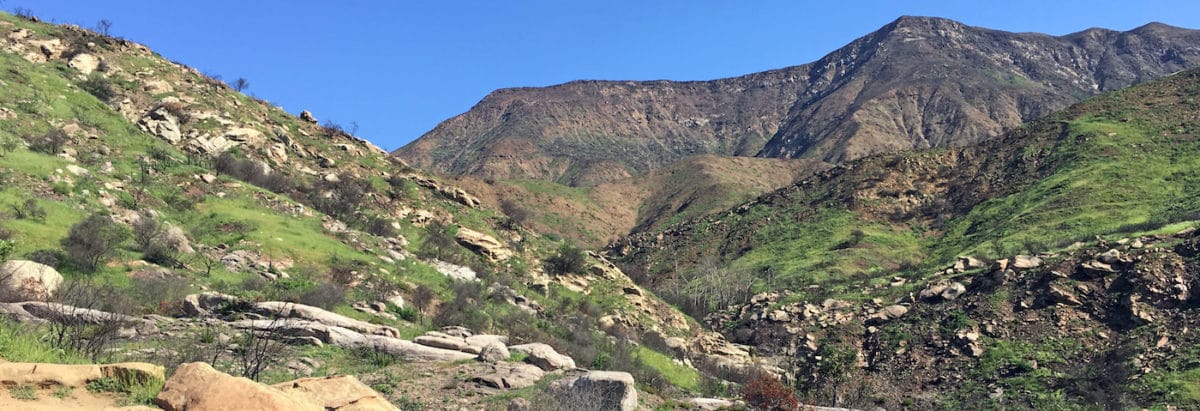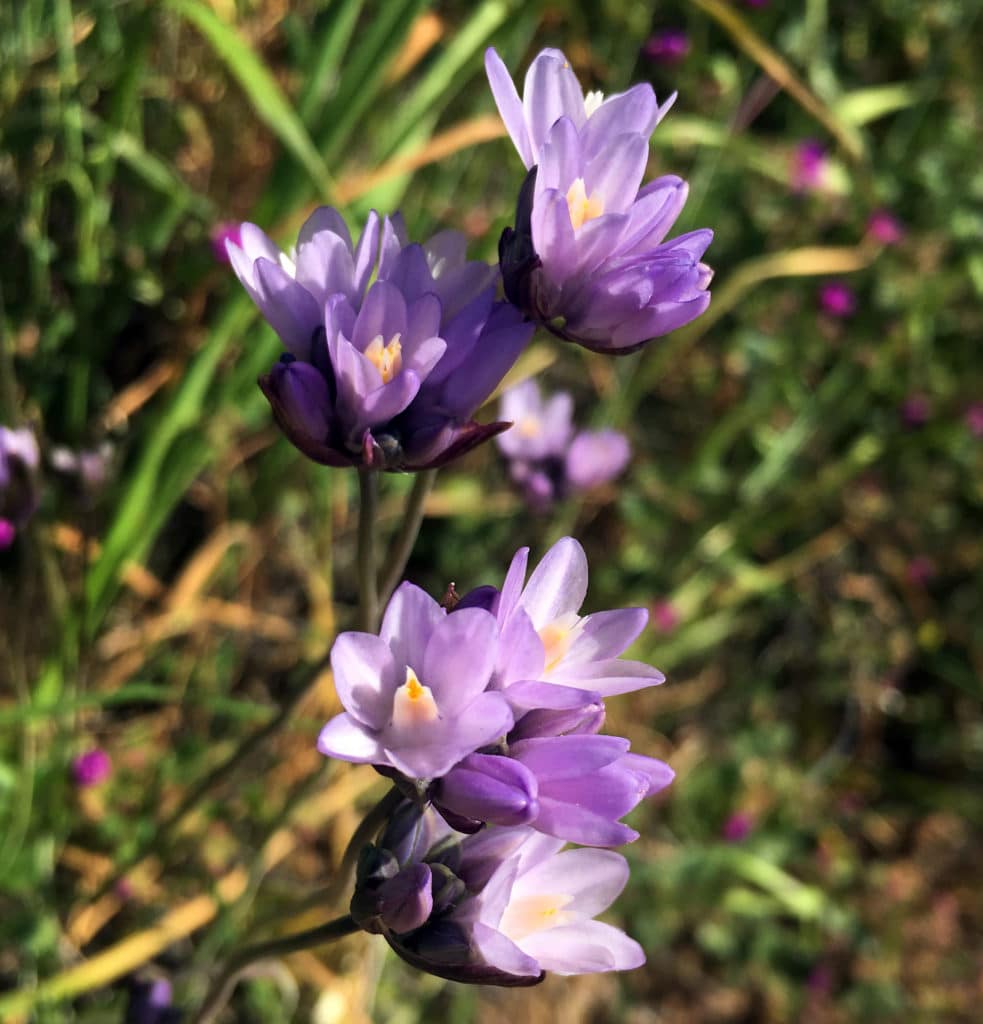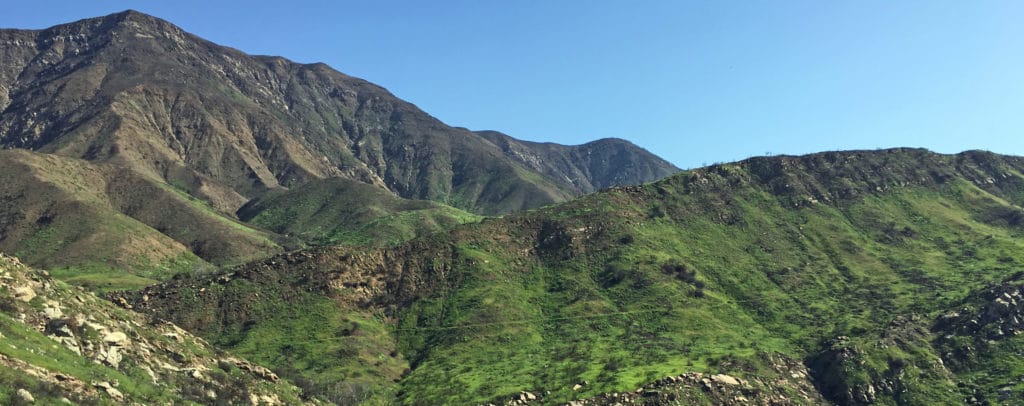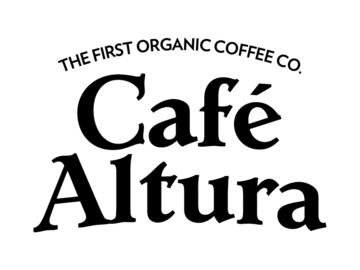
Chris Shepherd Interview: Ojai Roots
[Editor’s note: This piece is the first in a series of transcriptions from an interview with Clean Foods’ founder, Chris Shepherd. The interview is quite lengthy and covers a multitude of interesting subjects, so we’ve split it into parts which will be posted here over the coming months. Our conversation begins with Café Altura’s origins in Ojai, CA]
Bret: Tell me about Ojai and what you were doing before starting Clean Foods.
Chris : I moved to Ojai in 1978. I was invited to become a participant in anthroposophical community on a 75 acre ranch. There wasn’t anything planted there, but it was on the top of the hill called Highwinds Ranch. The idea was for us to bring in professionals to develop a community based on anthroposophical concerns and that included Biodynamic agriculture. That community didn’t work, as most communities fail; lack of funding, too many children, and way too many pets. It was great the first year, the second year was somewhat painful. I was the construction foreman so I was building and refurbishing a burned out building so somebody could live in it. I built an outhouse that was over a pump, put a roof on that and build a chicken sheds so our chickens could roost without getting eaten by the coyotes. I wasn’t involved in the business part of it and I was the only non anthroposophist there out of 30 or 40 people. I’d known the leader, Bruce since high school and I’d always been around Anthroposophy for some reason, I don’t know why. For the previous eight years I got to meet a lot of people over at Bruce’s house in Northridge and Anthroposophy was interesting. As I lived up in the community there was endless conversation about Biodynamic agriculture and how different it was than commercial agriculture and how beneficial it could be to restoring the earth and the soil and the planets and looking at things holistically. Even though I wasn’t an anthroposophist, it kind of made sense that that was a really fundamental way of viewing not just agriculture but the way that we lived.
So most of the people in the community left, but there was a core group of us still living up at the ranch and at some point we even worked at Uncle Bob’s chicken ranch next door because we were going to buy the chicken ranch. We were going to let them go on the ground and collect the eggs naturally, but then we found out that once they’re in those little pens they would never lay an egg again, there’s some sorta weird thing with that. No one really wanted to work there but the leader guy Bruce was trying to figure out a way to get a business to kind of fund things. When we realized we couldn’t do it naturally, we pulled away from that and Bruce and his wife owned a business called Nature and Form where they distributed anthroposophical cosmetics to Southern California and they asked me if I’d like to be in the business. I had a business background before I moved to Ojai and I really didn’t have much else to do at that point, so I became a 1/16th partner in this business that grossed ten thousand dollars a year. I spent the next year selling cosmetics, and I knew nothing about cosmetics. I sold it on the agriculture behind cosmetics.
Then one day while we’re still living up the farm we got visited by two guys Terje Naipan and Harry Klinkenberg, who were Demeter traders from Europe. They wanted California products, organic and if possible biodynamic, that they could import into Switzerland or Norway. They were looking for agents to help find these goods for them and then organize the export. I don’t remember how I got to be the guy, but I think I just exhibited enough business acumen that I assumed that role, and I could remember them saying ‘Hey we thought you were like the construction lackey, now all of a sudden you’re the export manager.’ It just kind of worked out that way. So during the time Tim Smith and Mark Novom and I were working on this project and we’d have to literally go out and meet with these supposed organic grower; walnut growers, almonds various fruits, apricots, and the idea would have been that if they were organic we could convince them to eventually convert into biodynamics, because that was Martin and Tim’s passion was. It wasn’t just organics it was biodynamics. That’s that’s what they needed to do. So we did this for about a year and then they came back the next year to visit and we actually did that three or four containers of organic products to Europe.

When they came back, one day we were just sitting on that beautiful mountain having a cup of coffee one afternoon and one of them, I think it was Terje said, ‘You know there’s this coffee farm in Mexico that sells coffee to us biodynamic traders in Europe. Why don’t you guys do it?” And I thought “[shoot] coffee? That’s a lot better than cosmetics.” Or dried fruits and nuts, for that matter, I could see that that was just a very difficult business to be in. We were never going to make any money doing it, so we asked how to get it touch with them. They sent us a telex no-e-mail no cell phones in the early 80s-and we had a contact name of some guy in Mexico City who was connected to the farm. So Tim called him up. Tim spoke Spanish and said we were in California and were interested in bringing their coffee in the United States, and we wondered if they had any interest. They said absolutely and told us to come on down and visit. So we flew him down there. I don’t know how we got the money to send him down. We didn’t have any money. So he flew down and met Ralph Peters in Mexico City. He took him to the Finca Irlanda in Chiapas. It was at the time the only biodynamic farm and the only certified organic coffee farm in the world; these things were concepts that didn’t exist yet.
Bret: This is an interesting thing I wanted to ask about. So this is all happening in Ojai, and that’s very strange to me, that Ojai is the nexus of all this. So was it just the anthropologists or is there something in the water in Ojai that makes sustainability such an important thing?
Chris : Well when I first moved to Ojai it was prophesied to be a new age center by Annie Besant, who was higher up in the Theosophical Society in the 30s, which was prominent in England in Europe. They came over, and I don’t know how they found Ojai but they sort of settled here and I think Annie Besant prophesied that when the darkness would come and we would sprout out of the new age there would be a number of centers where the new age would prosper and she said Ojai would be one of them. The theosophists bought a bunch of property, Highwinds Ranch being one parcel. There is a certain amount of acreage in Ojai that anybody that moved there had to get permission from the Theosophical Society to allow do what you are going to do up there. So Happy Valley school was part of that, the Ojai Foundation was part of that, Highwinds Ranch was part of that.

Bret: So this whole city as it developed kind of developed alongside these principles of sustainability?
Chris : Yeah and Krishnamurti had a big influence in Ojai as well. He had three or four centers around the world one in India one in England, Brookwood, and one some other place, he’d have talks here every spring and people would come from all over the country. He was part of the Theosophical Society, and his guy Leadbetter prophesied him to be the son of God. Krishnamurti who at that time was a very young man 19-20,said ‘no no I’m not the son of God, I don’t know where that came from.’ He was the hood ornament for Theosophy, he was their guy who was going to lead them into this new age, and he abruptly broke away from the Theosophical Society and started the Krishnamurti Foundation which has a retreat in Ojai, and schools all over the world. Rudolf Steiner also broke away from Theosophical Society, and he started anthroposophy. So Ojai in the 1980s had Meher Baba, Sai Baba, Rajneesh; every spiritual group you could think of was represented in this very small town in California of 7000 people. The town was just full of new age people and that slowly has evaporated over the years.
Bret: But the principles of sustainability and respect for the environment have persisted. When you throw around these terms like the antrhoposophy and theosophy, they’re sort of abstract and maybe hard for people to understand, but as you say even if the specific teachings of those systems has gone away over time, that commitment to sustainability is still there.
Chris : There is still in Ojai a general feeling of feeling of respect for the land, regeneration, sustainability, art which is one thing that about biodynamics that always interested me because it tries to bring art in the agriculture.
Bret: As in the agriculture itself as art?
Chris : Well, in a way. But one of the things that they did in Europe, was they brought curative homes for disabled or disadvantaged adults onto the farms. So we got visited by a guy named Trauger Groph, who was a German farmer. He didn’t look half dead like most of the farmers looked in the United States because they didn’t work 16 hours a day 363 days a year because he had a curative home. If you’re a young adult and you have challenges or disadvantages where you know you can’t live normally, where do you go? In these homes, these individuals were out with nature. They were given certain tasks repetitive tasks which they were really good at. Obviously their families would pay a fee and they would be given farm tasks. So everybody’s happy; the farmer has much less work he’s got income coming in from this curative environment that’s been created and most importantly the young adults have a purpose life and a safe ability to commune with nature instead of living in some stuffed up house somewhere and being taken care of.
Bret: It’s like a new age monasticism almost.
Chris : Yeah yeah yeah.
Interview By : Bret Colman, Director of Coffee / Head Roaster, Cafe Altura Organic Coffee
